Write Us
We are just a call away
[ LET’S TALK AI ]
X
Discover AI-
Powered Solutions
Get ready to explore cutting-edge AI technologies that can transform your workflow!

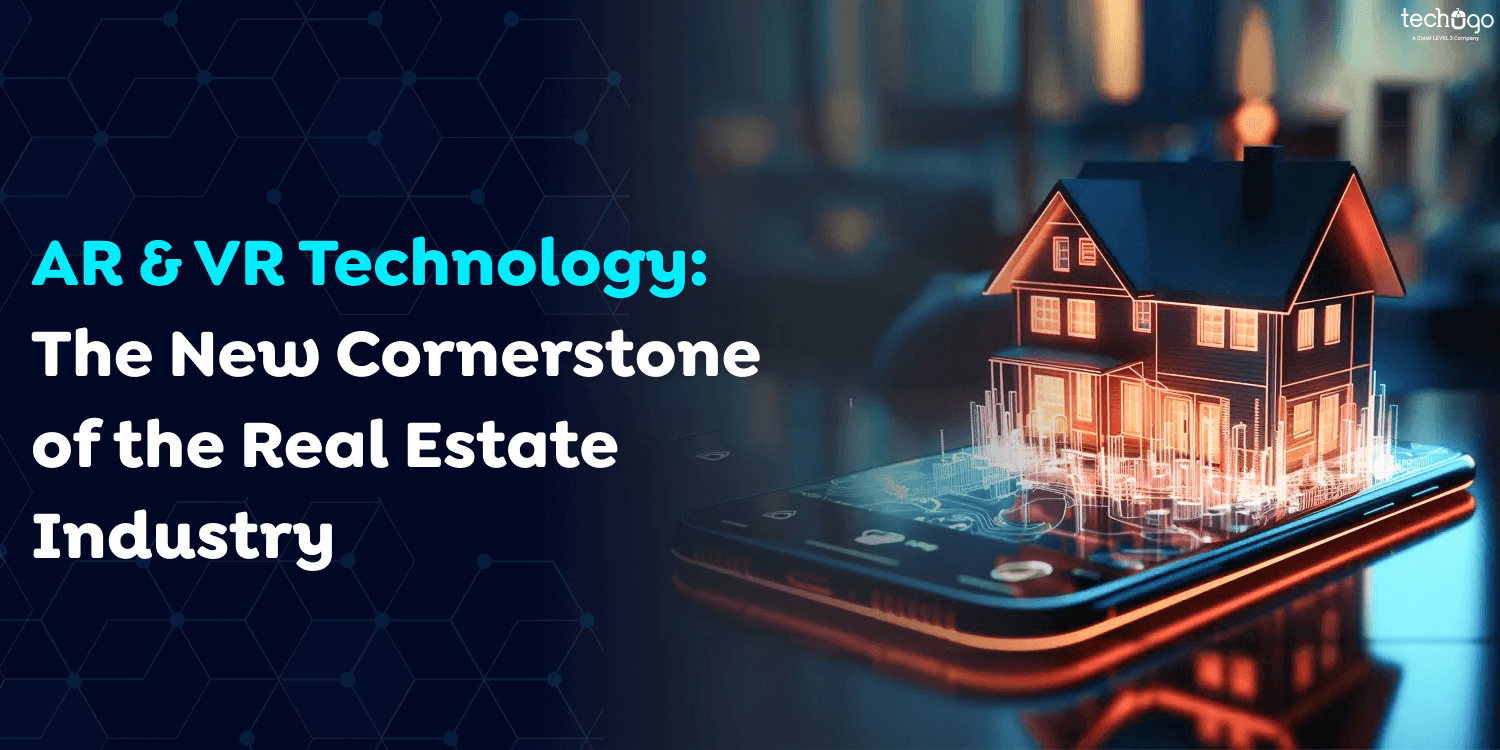
As humanity has advanced to the 21st century, Science and technology have undergone similar changes. We have developed and discovered incredible scientific methods that assist us in various ways. Technology will surely help in the years to come, too. Because of the constant advancement in technology, various firms have received lots of benefits from it, including the real estate industry and its trends.
The rise of the internet has benefited the real estate website design company and the real estate market. It has opened the doors to greater exposure to excellent real estate companies and offers. It is now possible to advertise online and purchase real estate properties. Thanks to the growth of the web, speedy and smooth real estate has benefited. Recently, the development of augmented and virtual reality apps has become the talk around town.
Both of these technologies bring technological advancements in the virtual world within the reach of users through software development. Real estate agencies and agents use these apps to advertise their properties more efficiently.
Why is technology so important in the real estate industry? What is its vital role in the next few years? We will explore the entire issue here in the article. Also, keep an eye on how an AR app development company can bring the best of technology for real estate app development. Let’s start!
AR and VR are modern technologies that offer users an immersive, interactive experience. Augmented Reality (AR) overlays virtual elements in the real-world environment and enhances them with extra digital details. It incorporates computer-generated graphics, sound, and other inputs from the senses to the user’s perception of the real world. AR lets users engage with objects in virtual reality while keeping the connection to their physical world. AR is usually experienced with smartphones, smart glasses, or head-up displays.
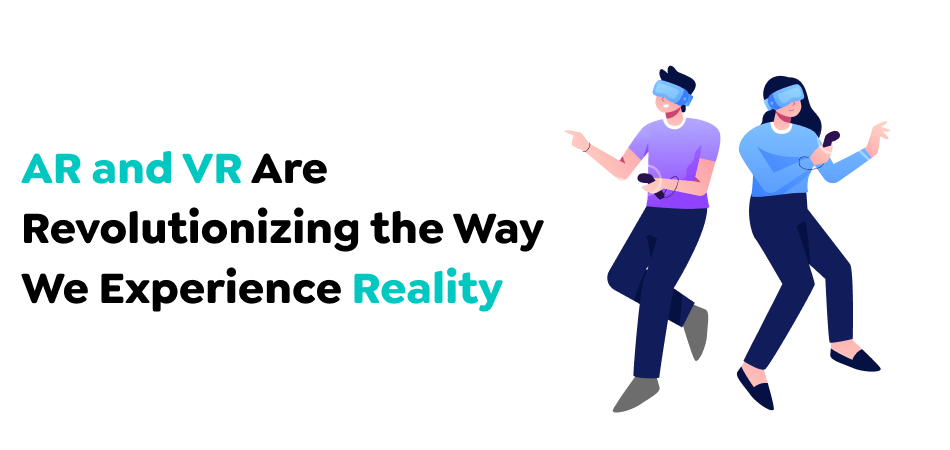
Virtual Reality (VR) creates a virtual environment that immerses users completely and blocks out the real world. The development of VR apps typically requires wearing a head-mounted display (HMD) that protects the eyes. Sometimes, it incorporates motion-tracking devices or controllers to allow interaction. The users feel like they are actually in the virtual world, which allows them to experience virtual objects and surroundings in an extremely immersive manner. VR can be used in training simulations, gaming VR, therapy, virtual tours, and entertainment.
AR and VR development technology can revolutionize the world of education, healthcare, architecture, entertainment, and other industries by providing unique and exciting experiences that transcend traditional media formats. They offer new communication, visualization, and interaction possibilities. However, they allow users to explore and interact with digital media in exciting and captivating ways.
It is evident that AR and VR play a vital role, and that’s why all developers worldwide are developing them so extensively. Even real estate mobile app development company in USA are trying to incorporate these two features of real estate apps into their website. Let’s take a look at the reasons why these two methods are the future of the real estate industry.
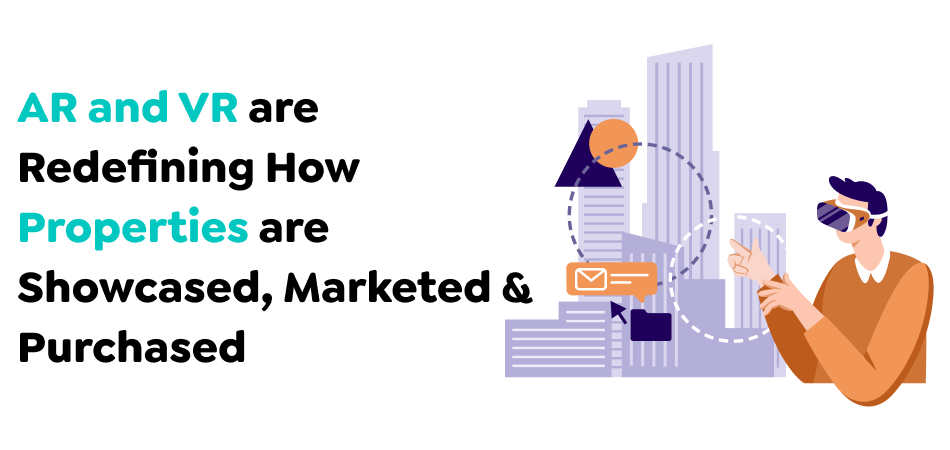
Let’s look at why these two strategies are a promising boon for the real estate industry:
When you purchase a product, you want to touch and feel it. In the same way, AR and VR enable buyers to engage with properties more easily before buying. Customers will experience an engaging and seamless experience when viewing any property they want to purchase. AR allows app development company to convert 2D images to 3D images. It helps users have a better experience. Customers can look over their room’s layout, the furniture size, layouts, and more and determine which design or layout is ideal for them.
With the advancement of AR-integrated real estate apps, Real estate mobile application developers are looking to save their clients’ time and energy. Users can experience a “first-hand experience of their property from a distance through an app. The application’s software will also supply users with additional details.
In real-time, it may correlate to the room’s dimensions, wires, amenities, number of rooms, etc. This means customers do not need to leave the home ad for a place. They must use the VR lens to get a feel for the property. Customers will also be able to check out the property from a distance without having to be physically present at the location. Isn’t that cool?
Since its beginning, Augmented Reality has broken the barriers between property and the buyer. This is why real estate agents get greater exposure. They can now meet potential clients regardless of how far away they live and demonstrate the property more effectively.
Also Read – The Impact of Augmented Reality (AR) in Marketing: Boosting Consumer Engagement
Real Estate website design assists customers in getting access to better dealers with more advanced technology than others. These dealers are now able to grow their business and draw more customers. This means that their sales and revenues will increase by a substantial margin.
This app allows users to access all the information they need. It allows them to check every dimension and measurement of the walls or floors. They can also be aware of the nearest services with Geo-Tag. The Geo-Tag feature displays all crucial locations and businesses operating in the vicinity. Thus, by using this application, they receive all the details they need before making a purchase.
VR and AR-integrated real estate applications will allow clients to evaluate a property before when it’s completed. Developers include their 3D VR model along with other features in the app. This is an exciting development in real estate. Therefore, buyers have plenty of time to decide whether to purchase an investment property. Even real estate brokers get an amazing chance to start advertising their properties and give clients an idea of the building process. In this manner, user engagement increases significantly.
Before buying a house, you’ll look over the plan, right? However, every reputable real-estate mobile app development company in the USA or around the world is currently working on a more advanced solution. They have successfully integrated AR and VR cameras into the application. It swiftly transforms flat blueprints printed on paper into real-time 3D interactive models. The new 3D modelling appears as a holographic image that can be rotated to provide greater clarity. This gives buyers an understanding of the dimensions and layout of the property, which is hard to convey on paper.
If a person plans to invest in real property, they are spending large sums. It is, therefore, expected that they would not put this much money into a property without being entirely sure. There have been many instances in which the buyers made a false impression of the property after viewing the blueprints in 2D.
With the help of VR or AR-integrated applications, clients can view properties in a more enlightened way. This influences their choice by a substantial margin. Many people will be convinced to make the correct decision after experiencing the property. These are the primary roles of AR and VR in creating real estate-related applications.
Design agencies for real estate websites are also planning on adding this technology to their websites, as it can provide fast and efficient online AR capabilities to clients. However, this application is a major breakthrough in the field of real estate.
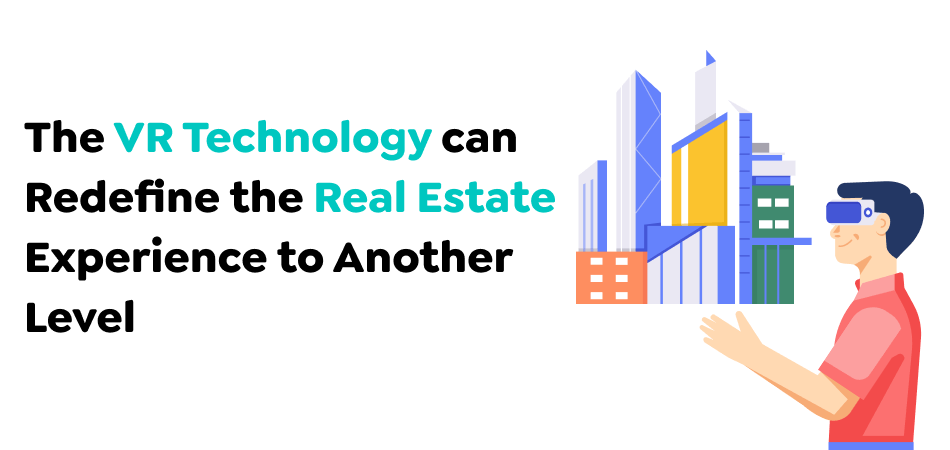
VR is transforming the real estate industry, altering how properties are bought and sold. VR technology lets people wanting to purchase or invest in the real estate market look at homes virtually. This gives the buyers an accurate and complete experience without seeing the property in the real world.
Also Read – Virtual Reality: The Artist Itself in the World of Art!
Real estate VR offers many significant advantages, including making the process more efficient, reducing costs, and simplifying the visualization of a property. In reality, it enhances the buying experience by providing buyers with engaging and valuable experiences that allow them to make more informed decisions.
As VR technology advances, we can anticipate more innovative concepts and more people utilizing this technology in the real estate industry. This means that it will change how homes are purchased, sold, and even viewed.
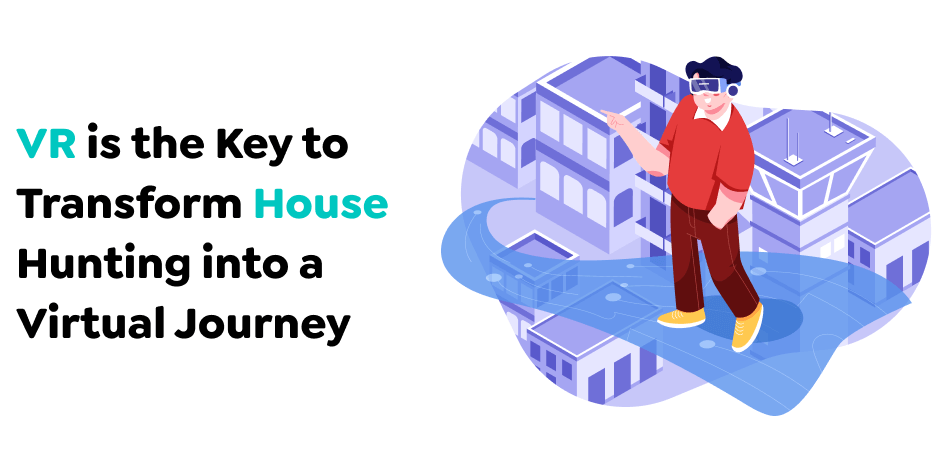
VR can improve real estate efficiency, marketing, growth, and property sales. Here are some specific ways in which VR could be used in real estate
Virtual reality makes virtual open houses possible, allowing people who are considering buying a house to view it from afar, engagingly and realistically. Users can move around rooms, look at more details, and get a feel of the space, similar to an actual open-air house.
2. Property Development Visualization
VR App Development Company helps developers show possible buyers unfinished projects. Users can virtually walk through drawings and 3D models of the building, giving them an accurate and detailed glimpse of the property before it’s constructed. VR aids in getting financing and also pre-sales.
Virtual reality technology lets users experience and alter how various interior design choices appear. It lets them try virtual designs, furniture layouts, colors, layouts, and finishes. Additionally, it assists people in making the right decisions and visualizing their ideal locations to work and live.
VR technology in real estate app development will allow virtual tours of shops, office buildings, and event venues. Anyone who wants to rent or purchase a property could look it up, determine if it meets their needs as a business, and then decide without ever seeing it.
Also Read – How Virtual Reality Has Revolutionized The Healthcare System?
Virtual reality can reduce the time spent visiting a real house, such as time and travel costs. Potential buyers can practically see a variety of houses at the convenience of their homes or workplaces. Thus, it reduces time and effort as well as accelerates the process of buying a home. Therefore, you can employ developers for mobile apps to create real estate apps at a lower expense.
Virtual Reality (VR) extends beyond physical boundaries, meaning that buyers around the world can browse houses from anywhere. It makes real estate advertising more accessible and attracts an even more significant number of potential investors and buyers.
Virtual Reality (VR) enhances the experience by making it more engaging and exciting and allows you to connect with objects more deeply. Users can experience the space, the atmosphere, and the layout. This will let users make more informed decisions and more effective connections in their minds.
Virtual reality in real estate application development accelerates the sales process by simplifying the presentation of assets. Thus, virtual experiences assist potential buyers in making their decisions quicker, cutting down on time to discuss deals and close them.
VR is a great tool for excursions beyond the property. It can also be utilized for virtual bike rides close to properties. Users can explore the area, services nearby, and websites to gain a comprehensive view of the location and the surrounding area.
Real-world instances of VR for real estate demonstrate how VR could alter how properties are presented, viewed, and sold, making them simpler. This would save money and bring people closer to owners, buyers, and investors.
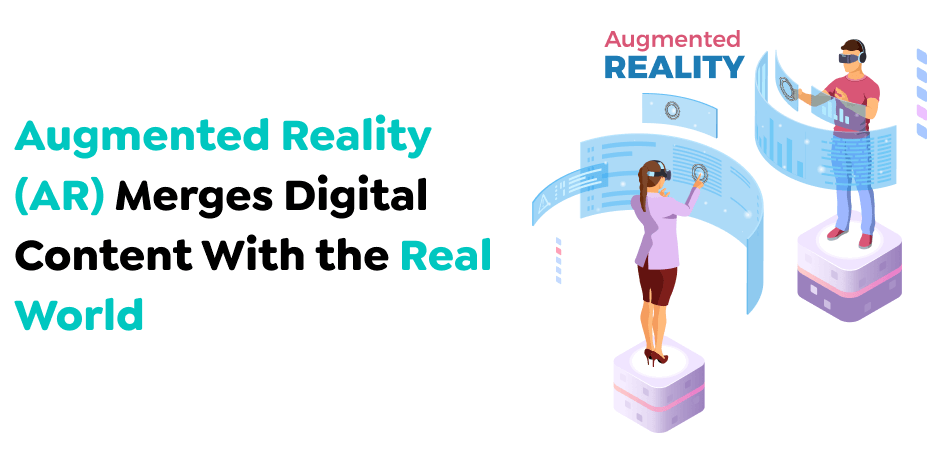
Augmented Reality (AR) development produces applications and experiences that provide digital media to the world. Computer-generated sound, images, and other sensory inputs are incorporated into augmented reality (AR) technologies to give an immersive and authentic experience.
AR development can be applied in various ways across various areas, including education, games, healthcare, marketing, and more. It enables people to interact with digital content while living in the real world, making the experience more engaging and exciting. AR technology is continuously improving. We can anticipate more innovative and beneficial applications in various fields.
Also Read – How Can Businesses Leverage Augmented Reality to Enhance Customer Engagement?
AR (Augmented Reality) is a popular technology with many applications in the real estate industry. It is a great tool for advertising, selling properties, and even involving customers. AR for real estate offers numerous advantages, like making it easier to view the property’s exterior, getting customers involved, and combining the real and digital.
It allows buyers to make better decisions and allows real estate agents to offer buyers more comprehensive and enjoyable experiences when they visit properties. As AR technology advances, AR app development company anticipate more breakthroughs that will change the way properties are advertised and sold.
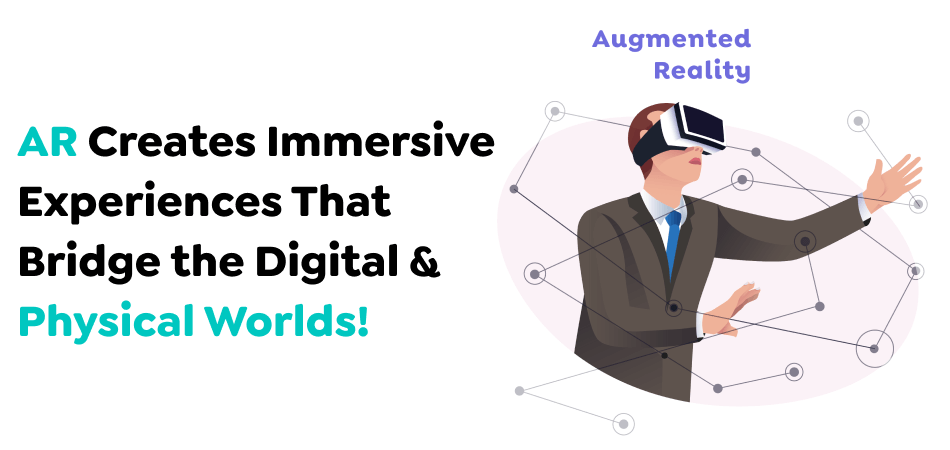
AR is a tool that can be utilized in various real estate areas to enhance marketing, property visualization, and customer experience.
Here are some ways in which AR can be applied to real estate:
AR applications for real estate can be utilized to build dynamic and exciting marketing campaigns. For example, those interested in purchasing a house could scan ads on paper or property brochures using their smartphones to access more details, video tours, or three-dimensional home models.
Augmented reality lets users experience and participate in floor plans that are superimposed on real-world spaces. By pointing their device at an architectural floor plan, users can view virtual representations of rooms, test other designs, and gain a better understanding of the layout and size of the building.
Augmented reality technology lets users know what changes or repairs made to interior designs appear before they occur. It is possible to put fake items over real ones, such as new colors for furniture, paint, or fixtures. This helps them determine a home’s value and what improvements should be made.
Adding digital information to billboards and signs could enhance real estate outdoor marketing using AR. For instance, anyone looking to purchase an apartment can scan the alert to learn more about it. They can also view a virtual tour or get contact details.
Cost and mortgage calculators that provide real-time data and figures can be incorporated into AR applications. Customers can direct their smartphones to a building and get home mortgage interest rates, monthly payments, and overall cost details. This will help them determine if a house is within their budget.
AR-based real estate apps can assist buyers from different countries by translating other languages in real time. Augmented Reality (AR) devices allow users to translate descriptions of property signs, messages, or even conversations. This makes searching for and purchasing a house easier and more accessible to all.
AR allows you to put 3D virtual models over the land that is not being used or on building sites. This lets people visualize how things appear in the near future. It allows an AR app development company to showcase their concepts and lets potential prospective buyers and investors see what the structure could be used for.
AR can provide virtual lease or purchase simulators, which allow users to experience the process of leasing or buying virtually. These simulators may include step-by-step instructions and interactive elements, simplifying the exchange process.
AR can provide information on things such as the quality of air, noise levels, and sunlight exposure to buildings by overlaying environmental information on top of it. It assists buyers in determining the conditions for their property and makes smart decisions.
Real-world instances of AR for real estate illustrate how AR can enhance the marketing process, property visualization, and decision-making. AR creates real-time and interactive experiences that bridge the digital and real worlds. It provides customers with more relevant information and keeps them interested in the industry.
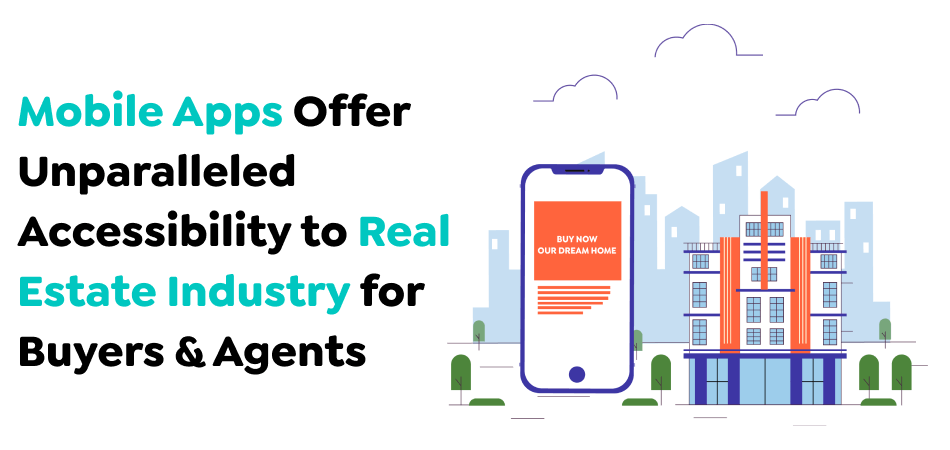
The real estate application development is growing rapidly and has the right reasons. Let’s look at the reasons it’s an industry-leading trend:
The process of buying and selling real estate through mobile apps is more accessible. The app users can schedule viewings, look at properties, and even send proposals from the comfort of their phones. This has changed the way people interact with the property market.
A smart real estate app enhances the user experience through easy navigation, dynamic listings of properties, and appealing visual elements. By allowing users to easily filter properties according to their preferences, users can increase their overall satisfaction and reduce time.
Mobile applications allow real estate agents and agencies to present their properties to a global audience. This increased visibility could draw in potential buyers and investors who might not have been aware of these opportunities through traditional channels.
When it comes to the real estate mobile app industry, large amounts of money and confidential data are involved. Mobile apps incorporate robust security protocols to protect user information and facilitate secure financial transactions, which increases trust among users participating in real estate transactions online.
Users receive real-time alerts that keep them updated on the latest listings, price changes, and other significant developments. This immediate communication is crucial in a highly competitive real estate market, where time is often essential in securing an investment property.
Mobile applications utilize AR and VR technology to give users an immersive experience of the properties. With virtual property tours and neighborhood exploration, potential buyers can understand the property before deciding.
It is a term used to define managing customer relationships. Real estate apps incorporate CRM features that aid agents in better managing their customer relationships. This entails monitoring customer interactions, administering leads, and providing custom-designed services that all help create more solid customer relationships.
By reducing paper documents, mobile applications help create efficient and sustainable real estate transactions. Digital documentation, such as digital signatures, electronic signatures, and cloud storage, dramatically reduces the environmental impact of conventional real estate practices.
Data collection and analysis through real estate apps provide important insights into market trends and user behavior. With a data-driven approach, agents and agencies can improve the strategies they employ to market, stay up-to-date, and make informed choices.
Using a mobile application can help real estate professionals stand above their competition in a highly competitive area. It shows a dedication to innovation, client satisfaction, and staying updated with the latest technology, ultimately drawing in tech-savvy clients.
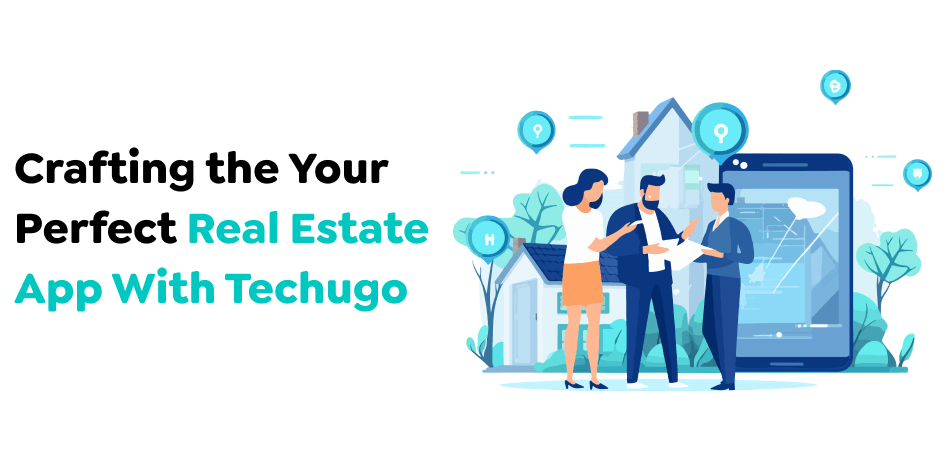
Through the exploration of key issues like market understanding, defining the app’s goal and target market, creating user-friendly interfaces, and applying agile technology, the guide highlights the multiple strategies needed to launch a successful mobile application for real estate in 2025. We explored the importance of selecting the best technology stack and the importance of responsive design that provides an effortless user experience across all gadgets.
Additionally, the discussions about monetization models offer a plan to generate sustainable revenue, and the strategy for marketing and launching can be used to get customers’ attention and build traction amid fierce competition.
The real estate industry is evolving. Given the challenges of developing real estate apps, a team approach and a keen eye on the market’s demands and requirements are crucial. Techugo, a leading AR app development company, specializes in crafting innovative real estate solutions. Our team of experts can partner with you to transform your vision into a reality. With a proven track record of delivering high-quality mobile apps, we understand the intricacies of the real estate industry. We can help you build a product that drives growth and customer satisfaction.
Are you ready to revolutionize the real estate market? Let’s connect and discuss your project.
Write Us
sales@techugo.comOr fill this form